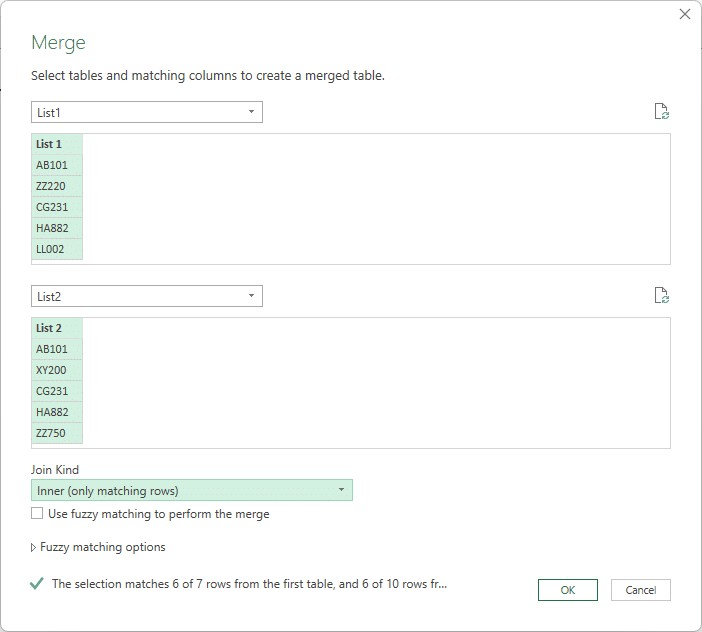Comparing data across multiple sources is a common task in data analysis. Power Query, a powerful data transformation and preparation tool in Excel and Power BI, offers efficient ways to compare two columns and identify matching or unique entries. This tutorial provides a step-by-step guide on How To Compare Two Columns In Power Query, empowering you to perform data analysis with ease.
Comparing Single-Column Lists
Let’s start with a simple scenario: comparing two single-column lists to find common and unique items.
-
Import Data into Power Query: Select any cell within your first list and go to
Data > From Table/Range. In the Power Query Editor, chooseClose & Load To > Connection Only. Repeat this process for the second list. This creates connection-only queries, allowing you to reference the data without loading it into a worksheet. -
Merge Queries: Navigate to
Get Data > Combine Queries > Merge. Select the first list as the primary table and the second list as the secondary table. Choose the columns to compare (in this case, the single column in each list) and select the appropriateJoin Kind.- Inner Join: Returns items present in both lists.
- Left Anti Join: Returns items present only in the first list.
- Right Anti Join: Returns items present only in the second list.
-
Load Results: After selecting the
Join Kind, clickOK. Power Query will generate a preview of the results. Remove any unnecessary columns and thenClose & Load Toa new worksheet or table to display the comparison results.
Comparing Multi-Column Tables
Power Query also handles comparisons between tables with multiple columns.
-
Import and Merge: Follow steps 1 and 2 from the single-column comparison. However, in the
Mergedialog, select all corresponding columns that need to match for a row to be considered a match. Ensure you select the columns in the same order from both tables. -
Refine Results: Power Query will combine matching rows based on the selected columns. You can then remove unnecessary columns, rename columns, or perform further transformations as needed within the Power Query Editor.
-
Comparing Specific Columns Without Matching: You can compare specific columns without using them for matching. For example, you might want to compare prices for matching products. Select only the ID columns for matching in the
Mergedialog. Then, in the resulting table, expand the nested columns to display both price columns side-by-side. You can even create a custom column to calculate the price difference.
Advanced Techniques and Considerations
- Fuzzy Matching: For approximate matches, consider using Power Query’s fuzzy matching capabilities to handle slight variations in data entry.
- Data Cleaning: Before comparing, clean your data to ensure consistency (e.g., remove extra spaces, standardize capitalization).
- Performance: For large datasets, optimizing query performance is crucial. Consider filtering or aggregating data before merging to reduce processing time.
Conclusion
Power Query provides a robust and flexible solution for comparing two columns in Excel. Whether dealing with simple lists or complex tables, understanding the different join types and utilizing Power Query’s transformation capabilities allows you to efficiently analyze and extract meaningful insights from your data. By mastering these techniques, you can unlock the full potential of Power Query for your data comparison needs.
